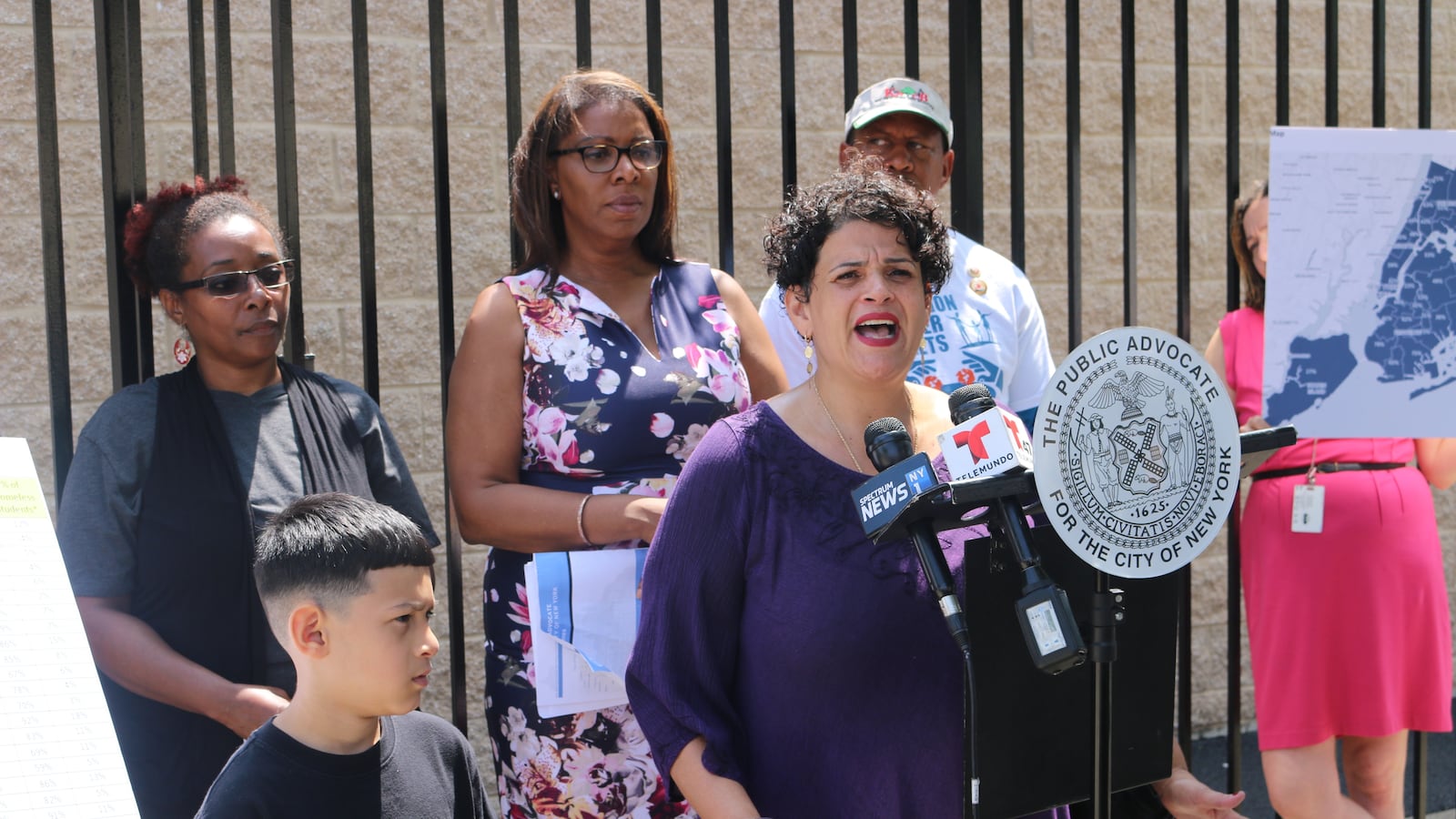Thousands of students with special needs in New York City are not receiving required services due to a system that forces families to find certain therapists on their own if their schools are unable to provide them.
That’s according to a report released Wednesday by the city’s public advocate, Letitia James, who investigated the city’s system for providing what are called “related services” — which include physical therapy, certain medical services and counseling, among other therapies.
When the city’s education department is unable to offer those services itself, or through a contractor, parents are given a voucher that can be used to pay an outside provider. But that system puts the onus on families to find providers, and about half of the 9,164 vouchers issued during the 2015-16 school year went unused, according to figures provided by the public advocate’s office.
“The burden should not shift from the Department of Education to parents,” James said at a press conference. “The process itself is in violation of the law.”
Even as the city has made reforms to its special education system, the report offers another window into a system that often falls short. The city’s own statistics showed that during the same year, just 59 percent of students with special needs received the full range of services they were entitled to, and thousands received no services at all.
The voucher system disadvantages poorer neighborhoods, the report finds, especially those in the far corners of Queens, Brooklyn, and the Bronx. In the Bronx’s District 8, for instance, 91 percent of the 129 vouchers issued in the 2015-16 school year went unused — the highest rate anywhere in the city. In Queens’s District 27, 79 percent of vouchers went unused. Brooklyn’s District 14, covering Williamsburg and Greenpoint, had the lowest rate of unused vouchers, but nearly a quarter still went unused.
Based on interviews with families and providers themselves, the report attributes the large share of unused vouchers to a series of interlocking barriers: Families often struggle to find providers in their neighborhoods, have difficulty arranging for transportation and getting reimbursed to send their children elsewhere, or simply can’t find providers who are responsive.
One parent, Yamile Henry, said through an interpreter that she wasn’t even aware she might need to take her son outside the school to get key services, and that letters were sent home in English (she speaks Spanish). “I cannot take my son to services because I work,” she said. “I still don’t know if my son is receiving them.”
But even parents who do try to arrange outside help often face roadblocks.
The public advocate’s office called scores of providers that the education department recommends to parents in the Bronx, and found the vast majority did not have any availability. Of the providers contacted, James said, just six were available and willing to travel to the Bronx.
The report notes that payment rates are low for providers in the voucher program, and reimbursement is often slow, meaning “many providers do not want to take [the vouchers] as a result.”
But even among the families who do manage to take advantage of the program, the services are often in place months after the school year starts, partly because of delays earlier in the referral process caused by the city’s notoriously dysfunctional special education data system.
Education department spokeswoman Toya Holness said the city has hired 700 new clinicians over the past three years for occupational, speech and physical therapy — and the percentage of students receiving required related services stood at 95 percent last school year, an 11 percentage point increase over five years.
Holness pointed out that only a small share of students who need related services are in the voucher program, and “we work closely with each family to connect them with an appropriate provider in their area and, if needed, provide transportation.”
Maggie Moroff, a disability policy expert at Advocates for Children, said in an interview that the report’s findings did not surprise her and that related services are just as important as general academic instruction.
“It’s all the other things that go into a student’s ability to process and learn and develop in school,” Moroff said. “Without any of them, you’re denying a student a really important piece of their education.”

